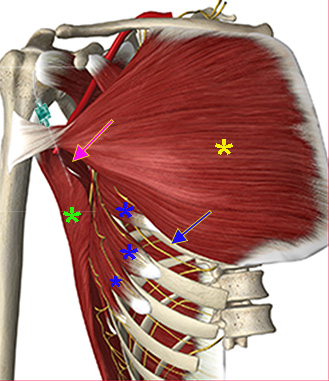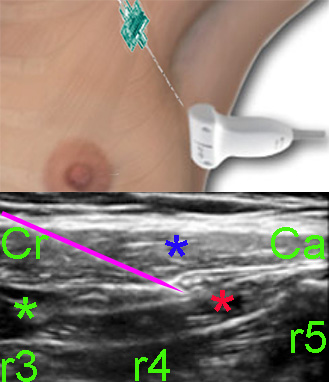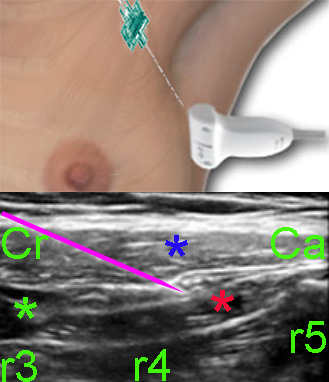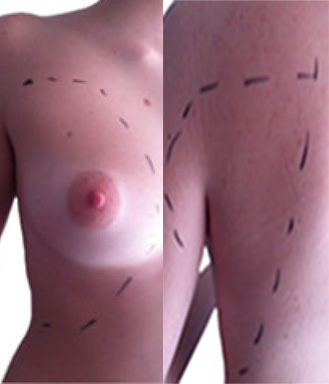With the superficial serratus plane block, the needle tip is inserted into the fascial space between the serratus anterior muscle and the latissimus dorsi muscle caudad to the teres major muscle
Local anaesthetic injected into this fascial plane covers the thoracic intercostal nerves and their lateral cutaneous branches – and also the thoracodorsal nerve which innervates the latissimus dorsi muscle and the long thoracic nerve which innervates the serratus anterior muscle. The last mentioned nerves run alongside the thoracodorsal artery.
Blanco R, Parras T, McDonnell JG, Prats-Galino A (see ref.) have also described a serratus plane block with injection of local anaesthetic into the fascial plane deep to the serratus anterior muscle
This deeper serratus plane block also produces analgesia of the thoracic intercostal nerves and the lateral hemithorax; however, the analgesia of the deep block seems to last a shorter time than the superficial serratus plane block





